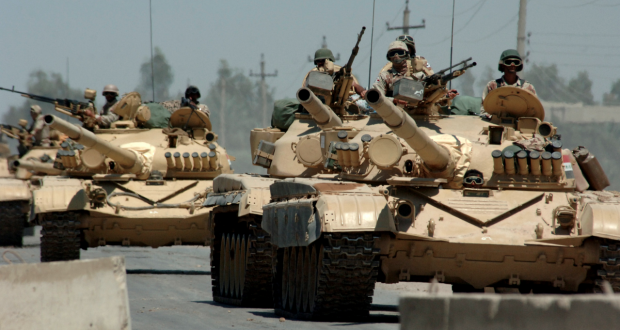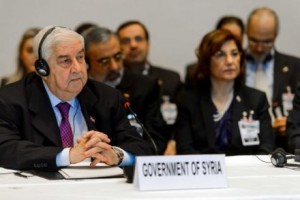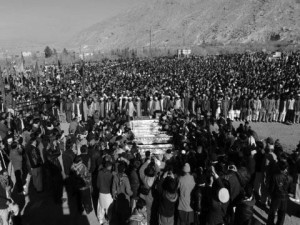The Iraqi military, alongside thousands of Shiite militia fighters, began a wide-scale offensive on Monday March 2, 2015 to retake the city of Tikrit from the Islamic State.
This was not the first time the Iraqi military has sought to retake Tikrit in the months since the city, Saddam Hussein’s hometown and a Sunni stronghold, fell into rebel hands during the Islamic State’s blitz through the country after seizing the northern city of Mosul in June of last year.
 Several times since then, the Iraqi army and allied Shiite militias have begun counteroffensives, only to abort them shortly after. These counteroffensives were sometimes in the defiance of objections from American officials, who would warn the Iraqi military of a blood bath should they try and enter Tikrit.
Several times since then, the Iraqi army and allied Shiite militias have begun counteroffensives, only to abort them shortly after. These counteroffensives were sometimes in the defiance of objections from American officials, who would warn the Iraqi military of a blood bath should they try and enter Tikrit.
By sundown Monday, March 2, 2015 fighting raged in the areas surrounding Tikrit, but the army and militia fighters had not yet pushed on the city’s center. ISIS, during this time, released a video that was intended to terrify the citizens who were considering aiding the advancement of the Iraqi military forces.
The video clip showed the execution by gunshot of four men dressed in orange jumpsuits. These men were said to have been local tribesmen collaborating with the Iraqi Military.
In a speech Monday to Parliament, Mr. Abadi echoed the words of President George W. Bush in the aftermath of the 9/11 terrorist attacks on the World Trades Center, saying that the residents of Tikrit were either with Iraqi or with ISIS. “There is no neutrality in the Battle against ISIS. If someone is being neutral with ISIS, then he is one of them.”
The fight against ISIS has brought the United States and Iraq into an awkward alliance in Iraq. While the United States’ effort has been in airstrike campaigns, Iraq has taken the most prominent role on the ground.
In a statement that addressed the worries over militias taking retribution on the local population, the United Nations representative in Iraq, Nickolay Mladenov, said Monday that “Military operations reinforced by international and Iraqi air support must be conducted with the utmost care to avoid civilian casualties, and with full respect for the fundamental human rights principles and humanitarian law.”
Rebels undertook a series of attacks in and around the Iraqi Capital Baghdad on Thursday, March 5, 2015 killing at least 16 civilians. These attacks by armed insurgents were mostly targeting civilian areas as Islamic State militants (ISIS) in the country’s north, set oil wells ablaze in an attempt to slow the Iraqi Government forces that were battling to reclaim territory.
In separate attacks on an outdoor market in the Baghdad suburb of Nahrawan, thirteen civilians were killed. At least thirty-nine individuals were wounded in a residential area in the southern district of Dora and in a market in Mahmoudiyah only twenty miles south of Baghdad.
An attack targeting a military patrol in a northeastern district, a bomb killed three soldiers and had wounded seven.
These armed attacks continue to come as government forces, Iranian-backed Shiite militias, and Sunni volunteers continue their fight to recapture areas around Saddam Hussein’s hometown, Tikrit, which fell to Islamic State Militants in June of 2014.
On Thursday, March 5, 2015 militants set fire to some oil wells outside the city. The smoky fires were apparently meant to obscure targets from government bombing raids. The Iraqi government took part in wide-scale operations that began Monday, March 2, 2015.



